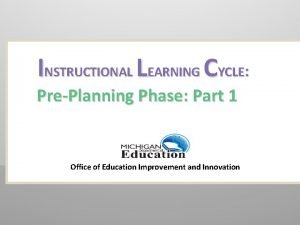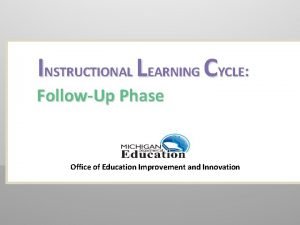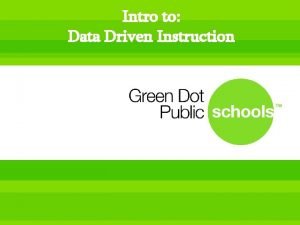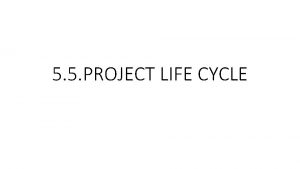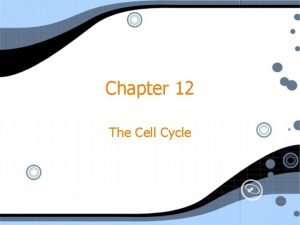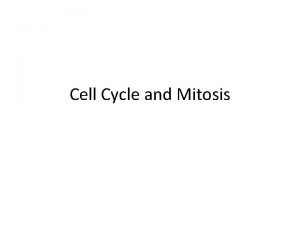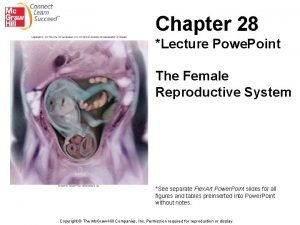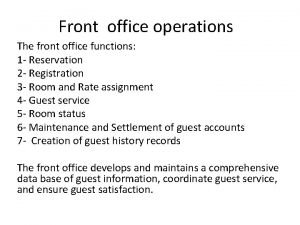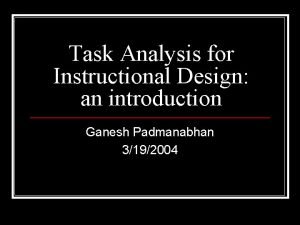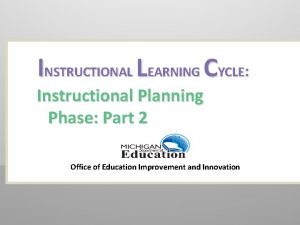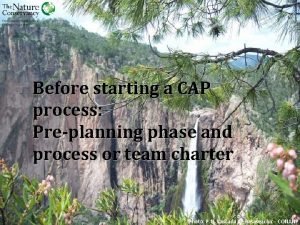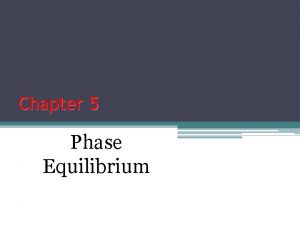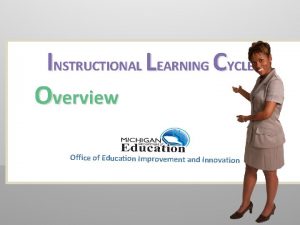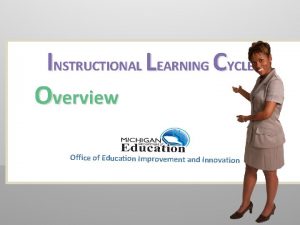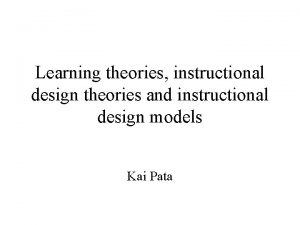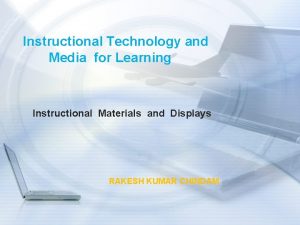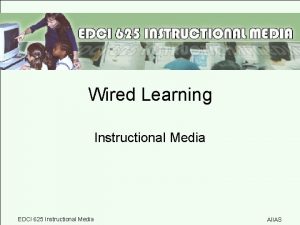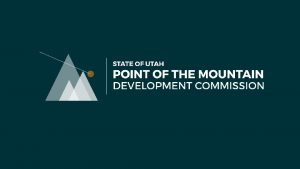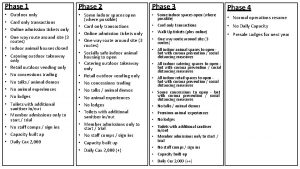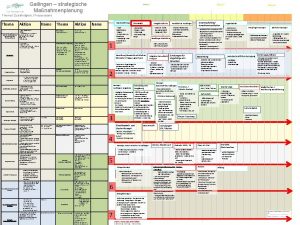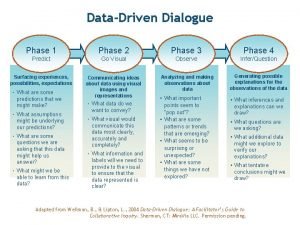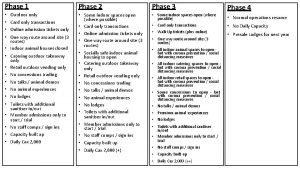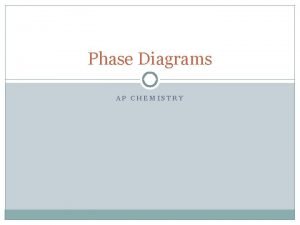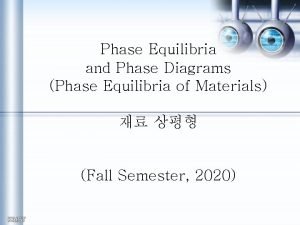INSTRUCTIONAL LEARNING CYCLE PrePlanning Phase Part 1 Office
































- Slides: 32

INSTRUCTIONAL LEARNING CYCLE: Pre-Planning Phase: Part 1 Office of Education Improvement and Innovation

Outline Pre-Planning Phase Individual Collaborative ILC Process Document

Pre-Planning Phase

Pre-Planning Guiding Questions What do we want students to know and be able to do? How will students demonstrate that they have acquired the essential knowledge and skills? How will we identify students who demonstrate proficiency, are close to proficient and far from proficient?

ILC Process Document Click on the document to download it for further review.

ILC Process Document What are we supposed to be teaching during the next 3 -5 weeks? What are the state standard(s) we will be addressing? What learning targets from the identified state standard(s) will we emphasize during the next 3 -5 weeks? How do we assess the identified learning targets? How will we identify students who are proficient, close to proficient and far from proficient?

Pre-Planning Phase Tasks

Pre-Planning Phase Tasks • Heavily rooted in research from cognitive psychology • Effective instructional planning model • Phases and questions and actions within each phase should be completed in the order they appear.

Identify Area of Focus Common Topic Identify Timeframe Beginning and End Dates 3 -5 Weeks

Align Instructional Components: Identify State Standards Assessment Instructional Strategies Learning Targets

Align Instructional Components: Identify State Standards What are the state standard(s) we will be addressing?

Align Instructional Components: Identify State Standards State Standard 2 State Standard 3 State Standard 1 TOPIC State Standard 6 Prioritize State Standard 5 State Standard 4

Prioritizing Standards 5. RI. 3: Explain the relationship or interactions between two or more individuals, events, ideas, or concepts in a historical, scientific, or technical text based on specific information in text. 5. RI. 5: Compare and contrast the overall structure (e. g. , chronology, comparison, cause/effect, problem/solution) of events, ideas, concepts, or information in two or more texts.

REAL Criteria for Prioritizing Standards eadiness - Knowledge and skills necessary for the next level of instruction ndurance - Knowledge and skills of value beyond a single test date ssessed - Likely to be assessed on state and national exams everage - Knowledge and skills of value across multiple disciplines

REAL Criteria for Prioritizing Standards 5. RI. 3: Explain the relationship or interactions between two or more individuals, events, ideas, or concepts in a historical, scientific, or technical text based on specific information in text. 5. RI. 5: Compare and contrast the overall structure (e. g. , chronology, comparison, cause/effect, problem/solution) of events, ideas, concepts, or information in two or more texts.

Align Instructional Components: Identify Learning Targets Based on data, what learning targets from the identified state standard(s) will we emphasize during the next 3 -5 weeks? STATE STANDARDS ASSESSMENT CONTENT INSTRUCTIONAL STRATEGIES

Unwrapping Standards STATE STANDARD Learning Target 1 Learning Target 2 Learning Target 3 Learning Target 4 t Sta e n Sta s d dar

Prep for Unwrapping Standards Standard 1 Standard 2

Unwrapping Standards – Key Words Circle all of the verbs (Skills) Underline all of the nouns (Concepts) Box any of the prepositional phrases (Context clues)

Unwrapping Standards Example Solve real world problems involving multiplication of fractions and mixed numbers, e. g. , by using visual fraction models or equations to represent the problem.

Unwrapping Standards Standard: Solve real world problems involving multiplication of fractions and mixed numbers, e. g. , by using visual fraction models or equations to represent the problem. What will students do? (Verbs) With what knowledge or concepts? (Nouns) In what context? (Prepositional phrases) Solve Real world problems involving multiplication of fractions By using visual fraction models Solve Real world problems involving multiplication of mixed numbers By using visual fraction models Solve Real world problems involving multiplication of fractions By using equations Solve Real world problems involving multiplication of mixed numbers By using equations

Learning Targets Identified! Solve real world problems involving multiplication of fractions and mixed numbers, e. g. , by using visual fraction models or equations to represent the problem. Solve real world problems involving multiplication of fractions using visual fraction models #1 Solve real world problems involving multiplication of mixed numbers using visual fraction models Solve real world problems involving multiplication of fractions using equations Solve real world problems involving multiplication of mixed numbers using equations #2 #3 #4

Implied Learning Targets Solve real world problems involving multiplication of fractions and mixed numbers, e. g. , by using visual fraction models or equations to represent the problem. How to solve basic problems involving multiplication of fractions using visual fraction models, i. e. not a real world problem Understand what a mixed number is Understand what a visual fraction model is

Learning Targets Learning Target Share

Review You must answer each question in the review before you can continue to the last slide of the presentation

Question 1: The ILC Process Document provides a way to guide conversations, track decisions, and collect classroom data. True or False

Question 2: There are three collaborative tasks for the Pre-Planning phase. They are. . . A. Identify an area of focus, align instructional components and plan the assessment B. Identify an area of focus, plan the assessment, and administer the assessment C. Align instructional components, plan the assessment, and analyze student results D. Align instructional components, plan the assessment and administer the assessment

Question 3: The timeframe of a common area of focus should be. . . A. B. C. D. 1 -2 weeks 2 -3 weeks 3 -5 weeks 5 -9 weeks

Question 4: Place the following components in the proper order in which they should be completed.

Question 5: The acronym REAL for prioritizing standards stands for. . . A. B. C. D. Readiness, Exams, Assessed, Link Ranked, Exam, Assessed, Leverage Ranked, Endurance, Assessed, Link Readiness, Endurance, Assessed, Leverage

Question 6: Each standard consists of only one learning target. True or False

Conclusion
 Instructional learning cycle
Instructional learning cycle Instructional learning cycle
Instructional learning cycle Instructional learning cycle
Instructional learning cycle Data driven instructional cycle
Data driven instructional cycle Cuadro comparativo de e-learning
Cuadro comparativo de e-learning Normal phase vs reverse phase chromatography
Normal phase vs reverse phase chromatography Hplc reverse phase vs normal phase
Hplc reverse phase vs normal phase Mobile phase and stationary phase
Mobile phase and stationary phase Mobile phase and stationary phase
Mobile phase and stationary phase Normal phase vs reverse phase chromatography
Normal phase vs reverse phase chromatography Phase to phase voltage
Phase to phase voltage Detectors used in hplc
Detectors used in hplc In a triangle connected source feeding a y connected load
In a triangle connected source feeding a y connected load Csce 441
Csce 441 Rpms cycle phase 2
Rpms cycle phase 2 What are the 8 stages of sdlc?
What are the 8 stages of sdlc? Pre investment phase in project life cycle
Pre investment phase in project life cycle What phase is this cell in
What phase is this cell in Longest phase of cell cycle
Longest phase of cell cycle Phase of menstrual cycle
Phase of menstrual cycle Mitosis pmat diagram
Mitosis pmat diagram Office and factory
Office and factory Part whole model subtraction
Part whole model subtraction Unit ratio definition
Unit ratio definition Part part whole
Part part whole Technical description meaning
Technical description meaning Bardie and speed rail are part of front bar
Bardie and speed rail are part of front bar The part of a shadow surrounding the darkest part
The part of a shadow surrounding the darkest part Minitab adalah
Minitab adalah Arrival front office
Arrival front office Task analysis instructional design
Task analysis instructional design Computer sic
Computer sic Conclusion for micro teaching
Conclusion for micro teaching
